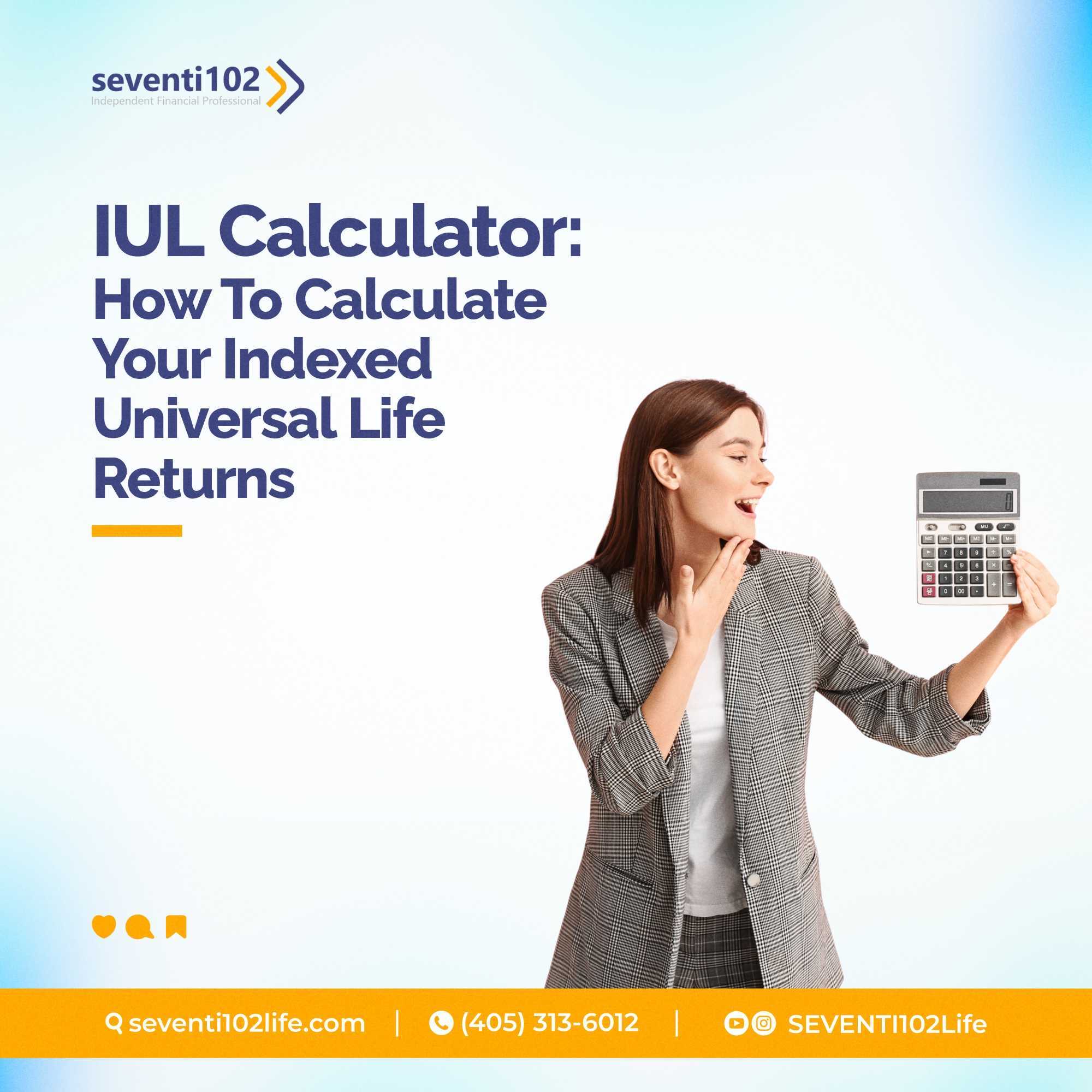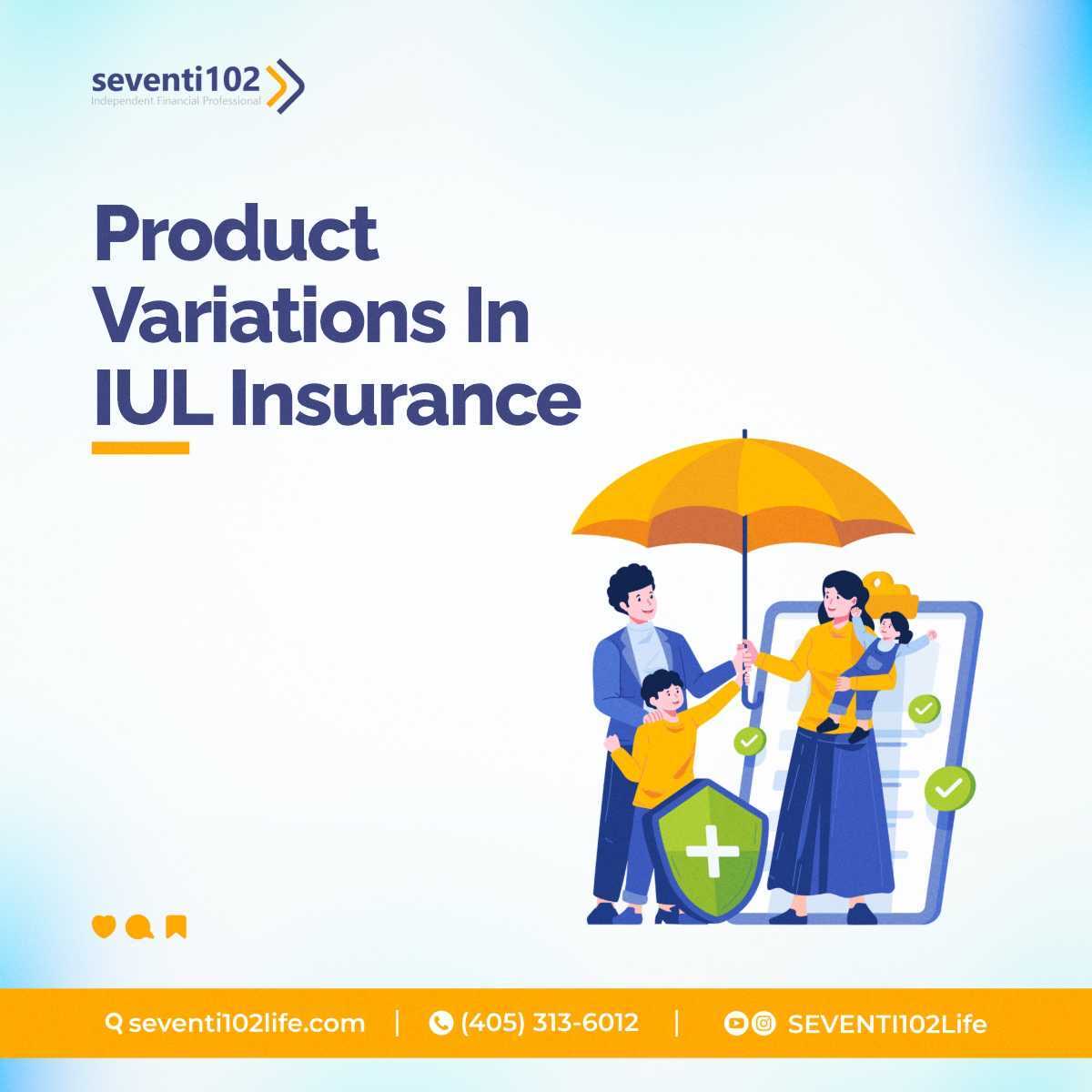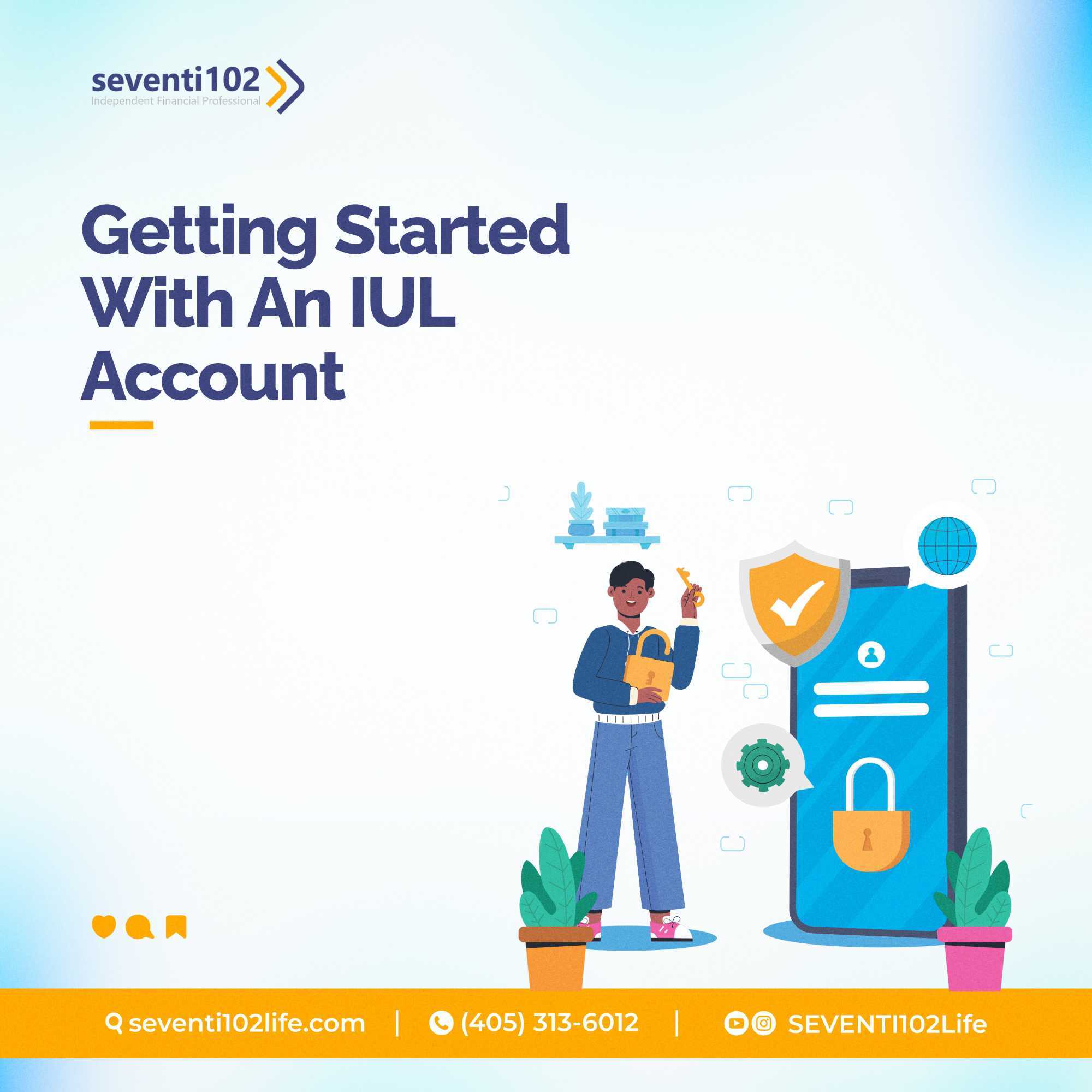An IUL calculator helps you estimate how much your Indexed Universal Life insurance policy could be worth in the future, taking into account factors like market performance, fees, and policy features. Understanding how to use these calculators properly is crucial because IUL policies are complex financial products where small differences in assumptions can lead to dramatically different projected outcomes.
Think of an IUL calculator like a GPS for your financial journey. Just as a GPS shows you different routes to reach your destination, an IUL calculator shows you various scenarios for how your policy might perform based on different market conditions and premium payment strategies. However, like any projection tool, the results are only as good as the assumptions you put into it.
Learning to calculate IUL returns yourself is important because it helps you understand exactly how your policy works, evaluate different policies from various insurance companies, and make informed decisions about premium payments and policy management. Many people rely solely on illustrations from agents without understanding the underlying calculations, which can lead to unrealistic expectations and poor financial planning decisions.
Summary
IUL calculators estimate future cash value and death benefits based on current policy features like cap rates, participation rates, spread rates, and projected index performance. Most IUL illustrations run at 6-7% for regulatory compliance, but actual returns depend on real market performance and changing policy costs.
Key calculation components include your premium payments, cost of insurance charges, administrative fees, index crediting methods, and market performance assumptions. Current competitive policies offer features like 25% cap rates and up to 310% participation rates, though these rates can change over time.
Understanding IUL calculations can help you compare policies, set realistic expectations, and make informed decisions about premium funding levels. The most important factors to consider are guaranteed minimums, current crediting rates, fee structures, and how different market scenarios affect your projected outcomes over 20-30 year time periods.
Understanding IUL Return Components

IUL returns come from several different components that work together to determine how much your cash value grows each year, and understanding each component helps you calculate more accurate projections and compare different policies effectively.
Index performance forms the foundation of IUL returns, typically linked to major market indices like the S&P 500, NASDAQ, or other benchmark indices. The diversity of these indices—spanning sectors, market capitalizations, and regions—can help fortify IUL strategies, but your actual return depends on how your chosen index performs during your specific policy years.
Cap rates limit the maximum interest you can earn in any given year, regardless of how well the index performs. For example, if your cap is 10% and the index returns 12%, your credited interest would be limited to 10%. Current competitive cap rates range from 10% to 25%, with some policies offering even higher caps on certain index options.
Participation rates determine what percentage of index gains you actually receive. The Participation Rate governs the return you will receive, subject to the Cap (if applicable) and Floor. A 90% participation rate means you get 90% of index gains up to your cap rate, while some policies now offer participation rates exceeding 100%, giving you more than the actual index performance up to the cap.
Floor rates protect you from market losses by guaranteeing minimum interest credits. It will never be less than 0% for any indexed account option, ensuring your cash value cannot decrease due to poor market performance, though policy fees can still reduce your account value even when you receive minimum credits.
Spread rates are annual fees deducted from your index gains before crediting interest to your account. If the index gains 8% and your spread rate is 2%, you receive 6% credited to your cash value. Not all policies use spread rates, but those that do typically charge 1-3% annually on positive returns.
Using Online IUL Calculators

Online IUL calculators provide convenient ways to estimate policy performance, but understanding their limitations and proper use is essential for getting meaningful results that help guide your financial planning decisions.
Basic calculators typically require inputs like your age, gender, health rating, desired death benefit, and annual premium payments. An IUL cash value calculator is a financial tool that we designed to estimate the potential growth and tax-free retirement income from an Indexed Universal Life Insurance policy. These tools provide quick estimates but may not reflect all policy nuances.
Professional illustration software used by insurance agents provides more detailed projections that include specific policy features, guaranteed minimums, current rates, and various performance scenarios. These illustrations are required to show both current assumptions and guaranteed minimums to help you understand best-case and worst-case scenarios.
Key inputs for accurate calculations include your specific health rating (preferred plus, standard, etc.), exact premium payment schedule, chosen index allocation strategy, and realistic market performance assumptions. Small changes in these inputs can significantly affect projected outcomes over 20-30 year periods.
Scenario analysis helps you understand how different market conditions affect your policy performance. Run calculations using conservative (4-5%), moderate (6-7%), and optimistic (8-9%) return assumptions to see the range of potential outcomes and plan accordingly.
Regular recalculation becomes important as your policy ages because actual performance may differ from initial projections. Annual policy statements show actual credits and charges, allowing you to update your calculations with real data rather than just projections.
Manual Calculation Methods

Understanding how to manually calculate IUL returns helps you verify calculator results and better understand exactly how your policy works under different market conditions and fee structures.
Annual crediting calculation starts with the index performance for your policy year. If the S&P 500 gains 12%, you multiply by your participation rate (let us say 90%) to get 10.8%. If your policy has a 15% cap rate, you receive the full 10.8%. If there is a 2% spread rate, you receive 8.8% credited to your cash value.
Cash value growth calculation takes your beginning cash value, adds any premium payments, subtracts cost of insurance and administrative fees, then applies the crediting rate to the remaining amount. For example, if you start with $50,000, add $6,000 in premiums, pay $2,000 in fees, and earn 8% on the remaining $54,000, your cash value grows by $4,320 to $58,320.
Compound growth over multiple years requires calculating each year separately because fees and crediting rates change annually. Your cash value growth accelerates over time as you accumulate larger amounts that earn index credits, assuming market performance supports positive crediting rates.
Cost basis tracking helps you understand the tax implications of accessing your cash value through loans or withdrawals. Your cost basis equals the total premiums paid minus any previous withdrawals, and this amount can be accessed tax-free before any gains are subject to taxation.
Death benefit calculations depend on whether you have Option A (level) or Option B (increasing) death benefits. Option A pays a fixed amount regardless of cash value, while Option B pays the death benefit plus accumulated cash value, providing larger inheritances when cash values grow significantly.
Key Variables That Affect Calculations

Several important variables significantly impact IUL return calculations, and understanding how changes in these variables affect your projections helps you make better policy decisions and set realistic expectations.
Market timing affects your results because IUL policies credit returns annually, typically on your policy anniversary date. Sequence of returns matters more than average returns because poor performance in early years limits cash value growth that could compound over decades, while strong early performance accelerates accumulation.
Premium payment timing and amounts dramatically affect long-term results. Most IUL illustrations run at 6-7% for regulatory compliance, but higher premium payments build more cash value that can earn index credits, while lower payments may barely cover policy costs and provide minimal accumulation.
Age and health ratings affect your cost of insurance charges, with older individuals and those with health issues paying higher insurance costs that reduce the amount available for cash value accumulation. These costs typically increase over time, making adequate premium funding more important for older policyholders.
Index selection impacts your returns because different indices have different historical performance patterns and volatility characteristics. Some indices may hit cap rates more frequently, while others might provide more consistent moderate gains that maximize your participation rate benefits.
Policy fees including administrative charges, cost of insurance, and rider fees reduce the amount of premium available for cash value accumulation. Lower-fee policies allow more money to compound over time, making fee comparison an important part of policy evaluation.
Company crediting rate changes can affect your returns because insurers may adjust cap rates, participation rates, and spread rates based on their costs and competitive positioning. Understanding guaranteed minimums helps you plan for potential rate changes over your policy’s lifetime.
Realistic Return Expectations

Setting realistic expectations for IUL returns requires understanding historical market performance, policy limitations, and the impact of fees and charges on your net returns over long time periods.
Historical S&P 500 performance shows average annual returns around 10-11% over long periods, but IUL policies typically credit lower amounts due to caps, participation rates, and fees. With an IUL, you can protect your family with up to $5 million in coverage, earn up to 8% annual returns, and never worry about market losses, reflecting more realistic expectations than raw index performance.
Market volatility affects IUL performance differently than direct investing because cap rates limit upside while floor rates protect downside. This typically results in smoother returns with lower peaks and higher valleys compared to direct market exposure, which may appeal to conservative investors but limits maximum growth potential.
Fee impact on returns becomes more significant over time as policy charges compound. A policy with 2% annual fees effectively reduces your growth rate from 8% to 6%, which over 30 years results in significantly lower accumulated values due to the compounding effect of the fee drag.
Regulatory illustration requirements mandate that insurance companies show projections using specific assumptions, typically around 6-7% annual returns, which may be conservative compared to long-term market averages but help prevent unrealistic expectations based on optimal scenarios.
Policy maturation considerations include the fact that cost of insurance charges increase with age, potentially requiring higher premium payments or reducing cash value growth in later years. Understanding these dynamics helps you plan appropriate funding strategies throughout your policy’s life.
Comparison to alternatives like direct investing, traditional whole life insurance, or other financial products helps put IUL returns in perspective. IUL typically offers lower growth potential than direct investing but provides downside protection and tax advantages that may justify the trade-off for conservative investors.
Common Calculation Mistakes

Avoiding common calculation mistakes helps ensure your IUL projections provide useful guidance for financial planning rather than creating unrealistic expectations that could lead to poor decisions.
Ignoring fees and charges in calculations leads to overly optimistic projections because many people focus only on index crediting without accounting for cost of insurance, administrative fees, and other policy charges that reduce net returns. Always subtract all applicable fees before calculating cash value growth.
Using unrealistic market assumptions like consistently high returns without considering market volatility and down years creates projections that are unlikely to occur in reality. Use historical averages and consider various scenarios including poor market performance periods.
Failing to account for changing policy costs, particularly increasing cost of insurance charges as you age, can make long-term projections inaccurate. These costs can accelerate in later years, requiring higher premium payments to maintain the same cash value growth rates.
Misunderstanding crediting methods like assuming monthly crediting when the policy uses annual point-to-point calculation can affect your projections. Different crediting methods perform differently under various market conditions, making it important to understand exactly how your policy calculates returns.
Over-relying on current rates without considering guaranteed minimums ignores the possibility that insurance companies may reduce cap rates, participation rates, or increase spread rates over time. Always evaluate both current and guaranteed policy features.
Neglecting tax implications when projecting policy loans or withdrawals can overestimate the net benefits of accessing cash value. While policy loans are typically tax-free, they reduce cash value growth and death benefits, affecting overall policy performance.
Optimizing Your IUL Performance

Understanding how to optimize IUL performance through proper funding, index selection, and policy management helps you maximize your returns while maintaining appropriate risk levels for your financial situation.
Premium optimization involves funding your policy at levels that maximize cash value accumulation without exceeding Modified Endowment Contract limits that could eliminate tax benefits. Many policies perform best when funded above minimum levels but below MEC limits.
Index allocation strategies can help balance growth potential with volatility management by diversifying among available index options. Some allocations might emphasize higher cap rate options, while others focus on more consistent crediting options that avoid frequent zero-credit years.
Annual policy reviews allow you to track actual performance against projections and make adjustments to premium payments or index allocations based on real results rather than just initial assumptions. Regular monitoring helps identify when changes might improve long-term outcomes.
Rebalancing opportunities typically available annually allow you to adjust your index allocation based on market conditions, policy performance, and changing personal preferences. Strategic rebalancing can help optimize returns over different market cycles.
Tax-efficient access strategies help you maximize the benefits of policy loans and withdrawals while minimizing tax implications and preserving death benefits for beneficiaries. Understanding the tax treatment of different access methods helps optimize your retirement income planning.
Professional guidance from knowledgeable agents or financial advisors can help you navigate the complexity of IUL policies and make informed decisions about funding, management, and optimization strategies that align with your overall financial plan.
You can book a free strategy session with us at seventi102 Life. We will be glad to be of assistance and help you navigate the intricacies of setting up a policy to tailor it to your specific needs and avoid mistakes that might make the venture unprofitable.
Conclusion
IUL calculators are valuable tools for understanding and projecting policy performance, but they require careful use and realistic assumptions to provide meaningful guidance for your financial planning. The key is understanding the underlying components that drive returns and using conservative assumptions that account for fees, market volatility, and changing policy costs.
Remember that all IUL projections are estimates based on assumptions about future market performance, insurance company crediting policies, and your ability to maintain premium payments. Actual results will differ from projections, making regular monitoring and adjustment important for long-term success.
Focus on understanding guaranteed minimums, current policy features, and fee structures rather than just optimistic return scenarios. The best IUL policies for your situation balance competitive current features with strong guarantees and reasonable fees that support long-term performance.
Work with knowledgeable professionals who can help you understand calculation methods, compare different policies, and develop appropriate expectations for your IUL performance. The complexity of these policies makes professional guidance valuable for making informed decisions that serve your financial objectives effectively.
Indexed Universal Life Insurance(IUL) policies have a lot of features that can potentially provide a safety net for you and for your loved ones. You should check out this video on how to safeguard your future and that of your loved ones against unforseen circumstances like job loss or illnesses.
FAQs
Question 1 How accurate are IUL calculator projections?
Answer: IUL calculator projections are estimates based on assumptions about future market performance and policy features, not guarantees of actual results. They are generally more accurate for shorter time periods and less reliable for 20-30 year projections due to market volatility and changing policy costs. Use projections as planning tools rather than promises, and focus on guaranteed minimums as well as current assumptions. Regular recalculation with actual policy performance data improves accuracy over time.
Question 2: What return rate should I use in IUL calculations?
Answer: Use multiple scenarios rather than a single return rate. Conservative projections might use 4-5% annually, moderate scenarios 6-7%, and optimistic scenarios 8-9%. Regulatory illustrations typically use around 6-7% as required by insurance regulations. Historical S&P 500 averages around 10% but IUL returns are typically lower due to caps, fees, and participation rates. Consider your time horizon and risk tolerance when choosing assumption ranges.
Question 3: How do I calculate the impact of fees on my IUL returns?
Answer: Subtract all annual fees from your gross return to determine net return. For example, if index credits 8% and total fees are 2%, your net return is 6%. Key fees include cost of insurance (increases with age), administrative charges (typically $100-300 annually), and spread rates (1-3% on positive returns). Calculate compounding impact over time – 2% annual fees can reduce 30-year accumulation by 30-40% compared to no fees.
Question 4: Can I trust the illustrations my insurance agent shows me?
Answer: Agent illustrations use insurance company software with regulated assumptions and are generally reliable for showing policy mechanics, but they are still projections, not guarantees. Focus on both current assumptions and guaranteed minimums shown in illustrations. Ask for multiple scenarios including poor market performance. Verify key policy features like caps, participation rates, and fees match what is described verbally. Consider getting illustrations from multiple companies for comparison.
Question 5: How often should I recalculate my IUL projections?
Answer: Review and recalculate annually when you receive your policy statement showing actual performance. Compare actual credits and charges to original projections to identify trends. Recalculate more frequently if you are considering premium changes or policy modifications. Major market events or insurance company rate changes may warrant additional recalculation. Use actual policy data rather than assumptions whenever possible to improve projection accuracy.
We hope you gained much from this article. Our previous article was on family coverage options in IUL. You can check it out as it contains a lot of valuable information













































